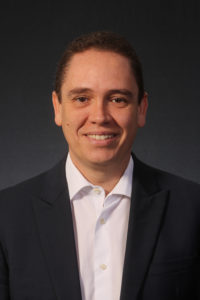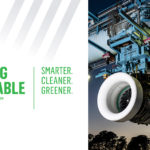Today marks the second day of the Sustainable Skies World Summit, which has been taking place at Farnborough International Exhibition & Conference Centre.
FINN caught up with Rodrigo Silva e Souza, VP Marketing and Strategy of Embraer Commercial Aviation who was a panellist during the session Hybrid electric & hydrogen: What will future engines and aircraft technology solutions be and by when?
He explained how Embraer was reducing the use of fossil fuels, its work on hydrogen fuel cell propulsion and what the industry needed for emissions-free aviation to become a reality.
Why was it important for Embraer become an event partner at the Sustainable Skies World Summit?
RSS: “Sustainable aviation forum is an event that attracts the most influential leaders in aviation industry in regards to sustainability. Embraer is a leader in the development of sustainable solutions for aviation and as such we want to promote the debate to extract the best ideas and support the transformation of our industry to a truly sustainable mode of transportation.”
The Sustainable Skies World Summit charts the industry’s progress towards reducing emissions. How has Embraer worked to reduce its emissions over the past year?
RSS: “Embraer has been working to increase its energy efficiency and reduce the use of fossil fuels. We took the opportunity given in 2021 to study our internal scenario, available technologies, and launch new commitments in ESG, among which the goal of being carbon neutral in our operations by 2040. To this end, we will use electricity 100 per cent from sources at our sites by 2030, and we plan on SAF representing at least 25 per cent of the total fuels we will use by 2040.”
took the opportunity given in 2021 to study our internal scenario, available technologies, and launch new commitments in ESG, among which the goal of being carbon neutral in our operations by 2040. To this end, we will use electricity 100 per cent from sources at our sites by 2030, and we plan on SAF representing at least 25 per cent of the total fuels we will use by 2040.”
“It is important to note that around 70 per cent of our scope 1 GHG emissions are from flight tests, which is why SAF will be essential in our strategy, until our new zero emission products become a reality. Finally, we are also partnering to credible entities to find relevant projects for carbon offset while the other solutions do not have the required scale.”
- “In regards to emissions of our products, the main activities were:
- The development of the Energia Family which are aircraft concepts ranging from 9 to 50 seats with very low or zero emissions.
- Planning e execution of flight technology demonstrators.
- Planning activities to fly the E195-E2 with 100 per cent SAF this year.
- Designing our new generation TP to minimise emissions and be compatible with 100 per cent SAF from day 1.”
Embraer is converting an EMB-203 Ipanema into a hydrogen fuel-cell propulsion demonstrator to fly by 2025. Can you outline where the company is at the moment with this project timeline?
RSS: “The project is on-going and on schedule for first flight by 2025. Currently we are finalising the initial design phase that includes the systems high level requirements, the preliminary systems sizing and defining key partnerships for the detail design phase.”
Embraer is working with suppliers with the goal of making the E-Jet E2 compatible with 100 per cent sustainable aviation fuel (SAF) with the “aspiration” of achieving this by 2030. Where is the company in terms of reaching this goal?
RSS: “We are currently planning the ground tests to be carried out in the aircraft in the second semester of this year as originally planned. We expect to test the aircraft likely for one or two weeks as part of the process of allowing us and our suppliers to have the necessary data to perform a safe flight. Last week PW concluded with success the ground tests for GTF engines. We are on track to fly the E2 with 100 per cent SAF this year.”
You took part in the panel session on ‘Hybrid electric & hydrogen: what will future engines and aircraft technology solutions be and by when?’ Can you name some of the key challenges that Embraer and the aviation industry as a whole will have to tackle as it moves towards “when” these technologies can be implemented?
RSS: “To achieve sustainable skies it will take a lot of effort from all stakeholders. Perhaps the most basic challenge is availability and cost of truly Clean Energy. Production of SAF, H2, electric power needs to be several times higher than today. Another fundamental piece specific for aviation is to have a certification framework for those new technologies. On top of all that specific technologies need to be improved:
- Battery density needs to be 3 times higher, costs needs to come down and life needs to be 2 to 3 times longer at high energy densities
- Fuel Cells: weight needs to be less than 30 per cent of what is today.
- Thermal management also needs to be improved
- Technology for on-board H2 storage (gas/liquid). Infrastructure for H2
“There is a lot that needs to happen but I believe we are making good progress and specifically at Embraer we are absolutely committed to achieve sustainable aviation.”

